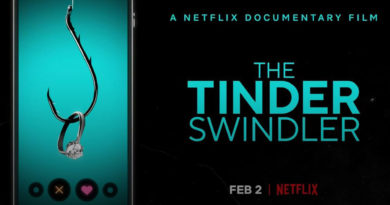Left, Right And Ghosted: The Reality of Modern Dating Apps
Not long ago, I joined Tinder and entered the world of swiping. I chatted with guys who seemed interesting—until one of them, after just three messages, sent an unsolicited graphic photo.
All I could do was laugh.
That laughter led to the realization that meeting someone spontaneously is almost as rare as witnessing a solar eclipse or finding someone who still uses a flip phone.
Dating apps have transformed how users connect, creating a culture of swipes, matches and ghosting. But what impact does that have on them psychologically and their relationships?
In 2012, dating apps took off with the arrival of Tinder, which remains one of the most popular Platforms.
According to a study by Pew Research, most couples meet online rather than through mutual connections or chance encounters. About 30-percent of American adults have used or currently use a dating app and half of them are under 30.
These platforms are designed for a generation that values instant, algorithm-driven matchmaking, bringing users bursts of serotonin while affecting their mental health and social habits.
Dating apps are a double-edged sword, especially in terms of self-worth. Let’s be honest, who doesn’t want a match? That moment of excitement when we say: “They like me? No way!”
However, a study by the AltaOma Living Center found that users often fixate on match counts rather than remembering why they downloaded the app in the first place—to form meaningful connections.
Another issue is when matches don’t happen and self-doubt creeps in. It’s like expecting a stranger to stop you on the street and say, “I like you.”
Rejection isn’t processed rationally. Most people internalize it, often feeling like failures.
The addictive nature of dating apps is also hard to ignore.
Scientifically, getting a match triggers a flood of dopamine in the brain’s reward system.
Anticipation—the what if—keeps users hooked, creating a cycle of swipe-and-reward that can lead to hours of scrolling and chasing the next hit of excitement.
That dopamine loop may explain why it’s difficult to put the phone down. We are always searching for the next match.
Ghosting—the act of disappearing without explanation—has also become the norm. A simple “I’m not interested” is often replaced with silence.
Many of us have ghosted someone at some point, but that doesn’t make it right. It remains an act of immaturity and a lack of emotional accountability.
Despite all of this, dating apps have at least expanded users’ social circles.
During the COVID-19 pandemic, they helped people stay connected, form friendships and build relationships.
They’ve provided sitcom-worthy moments like my unsolicited photo incident or a friend who chatted with someone for weeks, only to meet a completely different person on their date.
In the end, dating apps have shifted how people interact and perceive themselves. They’ve made users addicted to match counts and swiping, played with their self-esteem and normalized ghosting.
Yet, like any tool, the issue isn’t the app itself—it’s how it’s used.
Striking a balance is the key. We should enjoy the convenience of dating apps while still valuing eye contact, unfiltered conversations and the magic of spontaneity.



